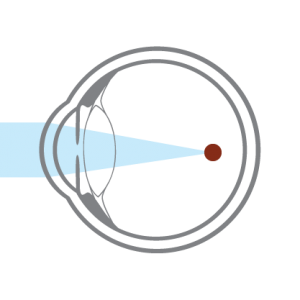Am I a Candidate?
FIND OUT IF YOU’RE A CANDIDATE
KELOWNA LASER VISION PHYSICIANS
Learn How Our Kelowna Laser Vision Correction Doctors Can Help You
The best way to find out if you’re a candidate for Laser Vision Correction is to visit Kelowna Laser Vision for a free consultation with one of our laser vision physicians in Kelowna. To prepare for your visit, you can get an idea of what we look for by answering a few simple questions about your vision.
The Anatomy of the Eye

The Optic Nerve
Near the centre of the retina is an opening where the large optic nerve leaves the eye. Across the entire retina is a network of millions of tiny nerve fibers, each one connected to a single retinal cell. They pick up the electrical energy created by that cell from image information. They converge to form the optic nerve and leave the eyeball within a nerve sheath. The optic nerve runs to the brain’s vision center where the electrical energy it carries is interpreted by the brain.
The Retina
Behind the lens is a fluid-filled area called the posterior chamber. The retina is the surface that borders it in a large curve, extending almost to the ciliary muscle around the lens. The retina acts like film in a camera. It receives light from an image and converts that light into electrical impulses, which are sent through the fibers of the optic nerve to the brain.The Sclera
Around the iris is the sclera, or “white of the eye”. It connects to the cornea.The Lens
Behind the iris is the anterior chamber which is a cavity filled with fluid. Behind this lies the lens, the curvature of which is controlled by a circular muscle around it called the ciliary muscle. After the cornea admits light and bends it into focus, the lens bends it further, helping a person focus on things that are nearby or far away.Internal Fluids
The anterior chamber, between the cornea and the lens, is filled with a fluid called aqueous humor, which bathes the lens, seeping around to its posterior side through small openings. The lens and cornea have no blood vessels and receive their nutrients from this aqueous fluid. The posterior chamber, between the lens and the retina, is filled with a fluid called vitreous humor. It is 99% water although it has a gel-like consistency. It is transparent to allow light through and helps to maintain the eye’s shape.The Cornea
The cornea is a transparent surface that curves over the iris and pupil. It is the lens that bends incoming light to focus it at the back of the eye. During Intralase SBK, PRK and other forms of Laser Vision Correction, the corneal curvature is affected in order to correct vision defects. The cornea is part of the wall of the eye and connects with the sclera.Vision Issues

Myopia, more commonly known as nearsightedness, occurs when an eye has too much focusing power. This means that the eyeball is either too long or the cornea is too steep, and the projected image falls short of the retina. The result is an improperly transmitted message to the brain or simply, a blurred image.

Hyperopia, or farsightedness, occurs when an eyeball is too short or the cornea’s curvature is too flat. The image that is being focused upon falls past the retina, in this case resulting in blurred or distorted vision.

People who wear glasses due to either myopia or hyperopia will often have some astigmatism as well. But astigmatism can also occur on its own and result in the need to wear glasses. An eye with astigmatism has an uneven surface and is shaped more like a football whereas a normal shaped eye is more spherical, like a basketball. Astigmatism results in having more than one focal point and blurred vision.

Presbyopia is a natural aging process that usually occurs between the ages of 40 and 50. The lens of the eye hardens and the muscles weaken. When people who have perfect vision all their lives become presbyopic, they need to wear reading glasses. People who already wear glasses for distance vision need to wear bifocals.
